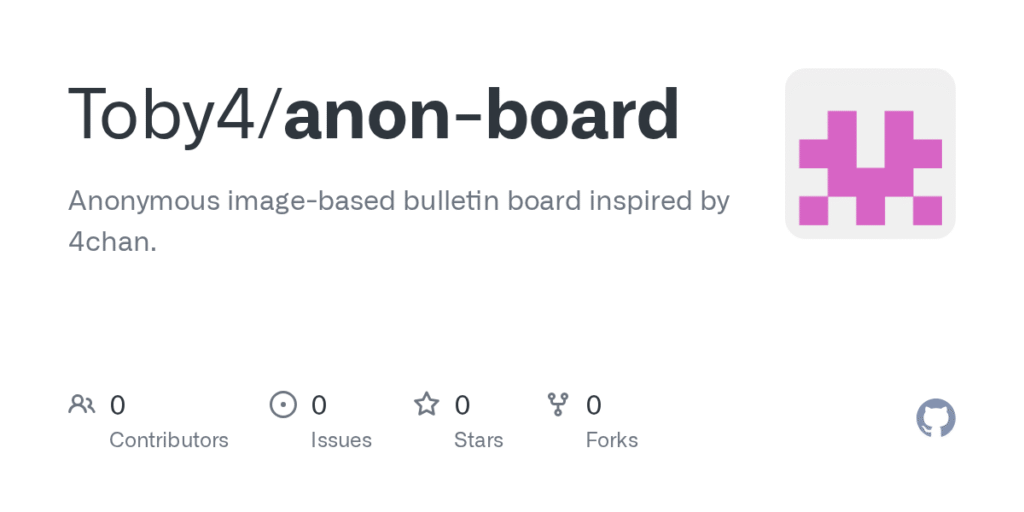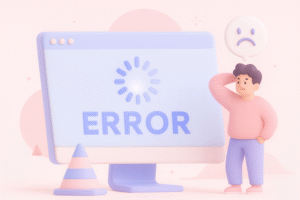Most people remember AnonIBs for its controversies, but few realize how much it shaped the early internet, and how much today’s platforms still mirror its DNA.
What started as a free-for-all imageboard quickly turned into a global example of how easily online freedom can spiral without structure.
Its story is a roadmap of how communities evolve when anonymity, speed, and visual content collide.
In this guide, we’ll explore what AnonIBs was, why it became such a problem, the real risks users faced, and, most importantly, the lessons modern users, businesses, and marketers can take from its rise and fall.
What Is AnonIBs?
AnonIBs (Anonymous Image Board) was an online platform where users could upload, view, and comment on images without creating an account or revealing personal information.
The user experience was intentionally simple: post content, join a thread, interact anonymously.
The platform emerged in the early 2000s during a shift from text-based forums to visual community spaces. Unlike traditional message boards requiring usernames, profiles, or logins, AnonIBs embraced complete identity freedom, allowing anyone to participate instantly.
Much like other imageboards, including 4chan, AnonIBs became known for its fast-moving discussions and niche communities.

But what truly set it apart was its emphasis on local and regional boards, where users shared community-specific content that reflected the culture or interests of their geographic area.
This mix of anonymity, speed, and visual content helped the platform grow quickly, but also made it difficult to control.
Key Features of AnonIBs
Before diving into the individual features, it’s important to understand why AnonIBs stood out among early internet platforms. Unlike traditional forums that relied on profiles, usernames, and verification,
AnonIBs focused on creating a frictionless experience where anyone could jump into a conversation instantly.
Its features were built around speed, simplicity, and complete freedom: elements that made the platform both uniquely appealing and uniquely difficult to control.
With that foundation in mind, here’s a closer look at the core features that shaped the way AnonIBs operated.
– Anonymous Posting
One of the biggest draws of AnonIBs was its complete anonymity. Users didn’t need an account, a username, or even an email address to participate. This lowered the barrier to entry and encouraged people to share openly without fear of judgment.
The lack of identity also created a rapid posting culture, where users felt free to be more candid or experimental.
For businesses observing this pattern, AnonIBs demonstrated how anonymity can dramatically increase engagement, but also how it must be paired with responsibility to avoid misuse.
– Image Sharing
As an imageboard, AnonIBs revolved around visuals rather than long text-based discussions. Users could post photos, memes, screenshots, and other image-based content to spark conversation or reactions.
This format made the platform fast-moving and highly engaging, especially for younger users. Because visual content spreads quickly, images often sparked far more interaction than text alone. The feature also reveals a marketing insight: platforms that prioritize visuals tend to encourage higher user activity, but they must manage the risks of unauthorized or inappropriate uploads.
– Community Threads
AnonIBs organized its content into topic-based threads, allowing users to find groups of people interested in the same themes.
These threads created micro-communities where discussions could continue for hours or even days. Users enjoyed the ability to instantly join conversations without needing approval or profile setup.
This structure made the platform feel dynamic and alive, with new topics constantly emerging. From a business perspective, these niche threads exemplify how powerful segmented communities can be when trying to understand user interests and behavior.
– Global Access
The platform drew users from around the world, making AnonIBs a global hub for anonymous interactions.
Many regions had their own dedicated boards, which reflected local cultures, interests, and online habits.
This global diversity created a wide variety of discussions and content, giving the site its unique, decentralized feel. It also meant trends could emerge locally and spread quickly across borders.
For marketers, this highlights how culturally tailored content can boost engagement, but also how moderation complexities multiply on global platforms.
Why AnonIBs Became a Problem
AnonIBs grew into a powerful example of how anonymity can escalate into harm if not paired with strong governance.
Lack of Moderation
With minimal oversight, harmful or inappropriate content was often posted without consequences.
Privacy and Consent Violations
Users frequently uploaded private or sensitive images without permission, leading to widespread privacy concerns.
Spread of Illegal or Abusive Content
The absence of rules enabled content that crossed legal boundaries, pushing authorities to intervene.
Law Enforcement Shutdown
After years of increasing scrutiny, several versions and mirror sites of AnonIBs were seized and taken offline, marking its final decline.
AnonIBs became a case study in how platforms can unravel when safety and ethics are not given equal weight to user freedom.
What Users Can Learn from AnonIBs
Main Risks of Using Platforms Like AnonIBs
Using unmoderated anonymous platforms such as AnonIBs can expose users to several serious risks, many of which are hidden beneath the surface.
These dangers affect privacy, security, and even legal safety. Here are the main risks users should be aware of:
- Privacy Violations. Personal images or identifying details can be shared without consent, often spreading far beyond the original platform. Once posted, it becomes nearly impossible to remove sensitive content completely.
- Exposure to Illegal Content. Anonymous imageboards frequently host content that violates privacy laws or copyright rules. Even unintentionally viewing or interacting with such material can have legal consequences.
- Cybersecurity Threats. Unregulated platforms are common targets for malware, spyware, phishing links, and malicious downloads. Users often get infected simply by clicking on images or pop-ups.
- Harassment and Doxxing. The lack of accountability encourages toxic behaviors like cyberbullying, impersonation, and targeted harassment. Users can easily become victims of doxxing when attackers expose their personal information.
- No Moderation or Support. Without moderators or reporting tools, harmful content stays online indefinitely. There’s no mechanism to remove dangerous posts or protect victims.
- Unreliable Community Behavior. Anonymous environments often attract trolls, spammers, and malicious actors, creating a hostile and unpredictable atmosphere that discourages healthy discussion.
These risks show why platforms like AnonIBs are not safe for users, and why choosing secure, moderated online spaces is essential for protecting both privacy and well-being.
Safer Alternatives to AnonIBs
For users who enjoyed the fast-paced, visual, and community-driven experience of AnonIBs but want a safer environment, today’s internet offers many responsible alternatives that balance creativity with proper oversight.
1. Reddit
Reddit offers a huge range of communities where people can post, comment, and browse anonymously using pseudonyms. Each subreddit has moderators who enforce rules and remove harmful content, making it far safer than unregulated boards. Users still get the freedom of open discussion, but with the added protection of reporting tools and community guidelines.
2. Discord
Discord provides both public and private servers where users can join conversations through text, voice, or video. Server owners can set rules, assign moderators, and use automated bots to block spam or unsafe content. This mix of privacy, flexibility, and structure creates a space that feels open while still being responsibly managed.
3. Quora (Anonymous Mode)
Quora lets users ask and answer questions under their real name or in Anonymous Mode, which hides their identity from the public. This gives people the freedom to share personal experiences or sensitive opinions without being exposed, while the platform still enforces strong moderation and content policies. It offers a balance between privacy and responsibility, making it a much safer option than fully unregulated anonymous boards like AnonIBs.
4. Tumblr
Tumblr is a visual-first social platform where users post images, GIFs, memes, and short blog-style content under pseudonyms. Strong community guidelines and built-in reporting tools help keep harmful or illegal content off the platform. It maintains the creativity and expression people love about imageboards, without exposing users to the dangers of fully unmoderated spaces.
5. Imgur
Imgur is a popular image-sharing community where users can upload photos, memes, and visual content without needing a full profile. While posting is easy and often pseudonymous, the platform has strong moderation policies that quickly remove harmful or inappropriate material. It maintains the fun, visual-heavy style of imageboards but with far safer community standards.
6. Mastodon
Mastodon is a decentralized social network made up of independent “instances,” each with its own rules and moderation team. Users can join communities that match their values and enjoy a more private, controlled environment than on anonymous boards. Its structure allows freedom of speech while still maintaining accountability and safety.
7. Pinterest or DeviantArt
Pinterest and DeviantArt offer safe spaces for sharing photos, artwork, and memes without exposing users to the dangers of unregulated posting. Content is monitored for safety, and users rarely encounter the chaos or risk associated with anonymous platforms. It’s ideal for people who enjoy visuals but prefer a calm, well-moderated community experience.
For those who prefer conversational environments with privacy control, moderated Telegram channels provide flexible communities that encourage open dialogue with built-in protections against abuse.
Even large social ecosystems like Facebook Groups, YouTube’s Community tab, and various private forums offer structured, interest-based spaces with dedicated moderators who keep harmful content in check.
These alternatives show that you can still enjoy vibrant online communities, creative expression, and open conversation, without the significant risks that led to AnonIBs’ downfall.
Cybersecurity Tips for Users
Staying safe online involves using smart habits that protect your privacy and data wherever you go. Many risks linked to anonymous boards like AnonIBs can be avoided with a few simple cybersecurity practices. Here are key tips every user should follow to stay safer on the internet:
Use a VPN to Protect Your Identity
A VPN hides your IP address and encrypts your connection, making it harder for websites, trackers, or malicious actors to trace your activity. This is especially important on public Wi-Fi or platforms that don’t offer strong security. A good VPN creates an extra layer of protection, even if the site you’re visiting is unsafe.
Avoid Clicking Unknown Links or Downloads
Anonymous platforms often contain malicious links disguised as harmless content. Always be cautious with unfamiliar URLs, suspicious images, or pop-ups asking you to download files. If something looks even slightly off, assume it’s unsafe.
Keep Your Devices Secure and Updated
Your phone or computer should always have updated antivirus software, security patches, and a modern browser. These updates fix vulnerabilities that attackers often exploit on unsafe websites. A secure device dramatically reduces your chances of malware infection.
Use Strong, Unique Passwords Everywhere
Never reuse the same password across multiple accounts. If one site is compromised, attackers can access everything else. A password manager makes it easy to create strong, unique passwords without trying to memorize them.
Limit the Personal Information You Share Online
Even on reputable sites, avoid revealing data like your real name, address, phone number, or workplace. The less personal information you leave on the internet, the harder it is for someone to target you. Assume everything you post online could eventually become public.
Report Harmful or Suspicious Activity
If you come across dangerous content or abusive behavior, report it immediately. Modern platforms have reporting tools for a reason, they help protect you and others from harm. Taking action also helps keep online communities healthy and safe.
Stick to Verified and Moderated Platforms
The safest digital communities are the ones with rules, active moderators, and clear safety policies. Whenever possible, choose platforms that value user protection rather than platforms that prioritize anonymity at any cost. A little moderation goes a long way in keeping users safe.
What Businesses Can Learn From AnonIBs
Lesson #1 from the Legacy of AnonIBs
The legacy of AnonIBs serves as a powerful case study for businesses building online platforms or digital communities. Its rise showed how anonymity and frictionless participation can fuel rapid growth, but its collapse revealed the consequences of ignoring moderation, safety, and accountability.
For companies, AnonIBs underscores that user engagement alone is not an indicator of long-term success; sustainable platforms require trust, protection, and clear ethical boundaries.
AnonIBs also reshaped how businesses think about community design. It demonstrated that features meant to empower users, such as unfiltered image sharing or instant posting, must be paired with systems that prevent misuse.
In many ways, the platform’s failure accelerated the industry-wide adoption of content filters, reporting tools, transparent policies, and proactive moderation teams.
Most importantly, AnonIBs highlighted the reputational risk companies face when they allow harmful content to flourish unchecked. Modern users expect brands to create environments where they can express themselves safely, and businesses that neglect this responsibility often face legal, social, and financial repercussions.
The story of AnonIBs teaches organizations that responsibility is a core part of building a digital product people can trust.
Lesson #2: Unmoderated Communities Can Destroy Brand Trust
AnonIBs is a clear example of how quickly a high-traffic community can turn into a liability when no rules or safeguards exist.
Engagement alone doesn’t guarantee a healthy platform. Without moderation, harmful content spreads fast, damaging user safety and brand reputation.
For businesses, this means moderation isn’t just “nice to have,” it’s a foundational layer of trust. Implementing clear community rules, hiring active moderators, and enforcing guidelines consistently helps prevent crises before they begin.
When users see a platform that values protection and accountability, they feel safer participating, and that builds long-term loyalty.
Lesson #3: User Experience Must Balance Freedom and Control
AnonIBs grew quickly because it offered total freedom: instant posting, zero requirements, no friction.
But that same freedom became its downfall once harmful content appeared and spread without resistance. Brands today must understand that users want expression, but not chaos.
Thoughtful UX design includes built-in reporting tools, content filters, automated flagging systems, and visible guidelines that shape behavior.
Balancing openness with structured controls creates an environment that is enjoyable, safe, and sustainable, the ideal foundation for long-term community growth.
Lesson #4: Crisis Prevention Beats Crisis Management Every Time
A major reason AnonIBs collapsed was that problems were ignored until they spiraled out of control.
Businesses cannot rely on damage control alone. The cost to reputation, resources, and user trust is too high. Instead, platforms must actively monitor user activity, detect emerging risks early, and address issues before they become public crises. Real-time alerts, moderation dashboards, and proactive community management give brands the ability to intervene quickly. Prevention protects both the platform and the people who use it, strengthening the business from the inside out.
Lesson #5: Safety Features Are Now a Competitive Advantage
AnonIBs proved that platforms without guardrails eventually lose users, legal standing, and credibility.
Today, safety isn’t just a technical feature. It’s a powerful differentiator in a crowded digital landscape. Companies that embed safety into their design (from identity protection to AI moderation) gain trust faster, retain users longer, and build a stronger brand reputation. Modern audiences gravitate toward platforms that feel secure and transparent. “Safe by design” is now a selling point that can elevate a business above competitors who treat safety as an afterthought.
What Marketers Can Learn From AnonIBs
Lesson 1: Anonymity Reveals Unfiltered User Behavior
AnonIBs showed what people do, say, and share when the pressure of identity is removed.
For marketers, this highlights how valuable anonymous feedback can be. It often exposes real pain points, interests, and desires that users hide on polished, identity-based platforms.
Anonymous sentiment tools, private surveys, and judgment-free feedback channels can help brands tap into genuine consumer insights without crossing ethical boundaries.
Lesson 2: Niche Communities Drive Stronger Engagement Than Broad Audiences
One of the reasons AnonIBs grew so quickly was its structure of hyper-specific threads and regional boards. These small pockets of highly engaged users created the platform’s viral momentum. Marketers can learn from this by building targeted micro-communities around niche interests instead of trying to appeal to everyone at once. When you speak to a focused group, conversations deepen, loyalty rises, and content spreads organically.
Lesson 3: Fast, Visual Content Always Wins Attention
AnonIBs thrived on speed, users posted quickly, reacted instantly, and built conversations around images, not long text.
This mirrors modern marketing trends: short videos, memes, reaction posts, and visual storytelling consistently outperform text-heavy content.
For marketers, the takeaway is simple: visual-first content grabs attention, increases engagement, and encourages sharing, especially among younger audiences.
Lesson 4: Virality Requires Low Friction, But Ethical Guardrails Matter
AnonIBs spread rapidly because anyone could post without logging in or creating a profile. Frictionless experiences accelerate engagement, conversions, and user-generated content. But AnonIBs also proves that removing all friction can lead to chaos.
Marketers should design onboarding, submissions, and interactions to be as effortless as possible, while still maintaining safeguards like moderation, verification tools, and automated content checks.
Lesson 5: Controversy Builds Momentum, But It Comes With a Cost
AnonIBs gained global attention not only because of its features but also because of its controversies. This demonstrates a marketing truth: controversy attracts traffic, headlines, and curiosity.
But as the platform’s downfall shows, attention without values and safety can destroy credibility.
The lesson for marketers is that not all buzz is good buzz, sustained brand growth comes from trust, not shock value.
Lesson 6: Community Trust Is the Most Valuable Marketing Asset
Ultimately, AnonIBs collapsed because users no longer felt safe or protected. For marketers, this underscores how essential trust is in every digital interaction. A trusted community will advocate for your brand, create content, defend you publicly, and stay loyal through change. Building this trust through transparency, safety, and responsible communication is one of the most powerful growth strategies a marketer can invest in.
Conclusion
AnonIBs remains one of the most striking examples of how anonymity can shape an online community, for better and for worse.
Its rise showed how people naturally gravitate toward platforms that feel free, expressive, and frictionless.
But its downfall revealed the real cost of ignoring moderation, safety, and accountability.
For everyday users, AnonIBs is a reminder to choose communities that protect privacy without sacrificing responsibility.
And for businesses and marketers, it stands as a powerful lesson in the importance of trust, structure, and ethical design.
The platform’s story proves that engagement alone is not enough to sustain a digital ecosystem. Lasting success comes from environments where people feel safe to participate, confident their data is protected, and assured that harmful behavior won’t be overlooked.
At the same time, AnonIBs teaches marketers how niche communities grow, how visuals drive conversation, and why user psychology is at the heart of every successful online space.
While AnonIBs may be gone, the lessons it left behind continue to shape modern platforms, user expectations, and brand strategies.
The future of digital communities depends on striking the right balance between freedom and responsibility, creating spaces that empower people without putting them at risk.
If businesses and marketers can learn from AnonIBs’ history, they can build stronger, safer, and more meaningful online environments for everyone.
Frequently Asked Questions (FAQ)
1. What was AnonIBs?
AnonIBs was an anonymous imageboard where users could post images and comments without creating accounts. Its lack of moderation eventually led to misuse, privacy violations, and legal issues.
2. Is AnonIBs still online today?
The original platform is no longer active. While various mirror sites have appeared over time, most are unsafe, unregulated, and carry significant legal and cybersecurity risks.
3. What lessons can users learn from AnonIBs?
Users should understand the dangers of unmoderated anonymous platforms, such as privacy breaches, malware, and legal consequences, and prioritize safer communities with clear rules and strong moderation.
4. What can businesses learn from the rise and fall of AnonIBs?
AnonIBs shows the importance of balancing freedom with responsibility. Brands must invest in moderation, safety features, and community guidelines to prevent harm and protect their reputation.
5. Why is AnonIBs important for marketers to study?
For marketers, AnonIBs highlights how fast online communities can grow (and collapse) without trust. It teaches modern marketers to build communities that are safe, transparent, and aligned with brand values.
6. Are there safe alternatives to AnonIBs?
Yes. Platforms like Reddit, Discord, Quora (Anonymous Mode), and Imgur offer community interaction or image sharing with stronger moderation, reporting tools, and safer environments.
7. Is it safe to visit sites claiming to be “AnonIBs”?
No. Most mirror sites are riddled with malware, phishing attempts, or illegal content. Experts strongly advise avoiding them entirely.
8. How did AnonIBs influence modern online platforms?
Its failures pushed developers to adopt better content filters, reporting systems, safety controls, and stricter rules around anonymity, shaping how today’s digital communities are built.
8. What’s the biggest takeaway from the AnonIBs story?
That anonymity must come with accountability. Platforms grow sustainably only when freedom and safety are balanced, benefiting both users and brands alike.









